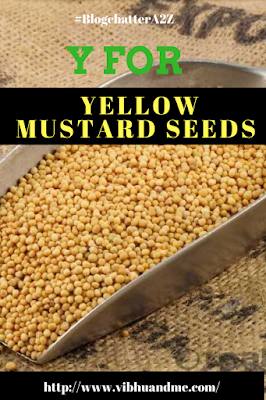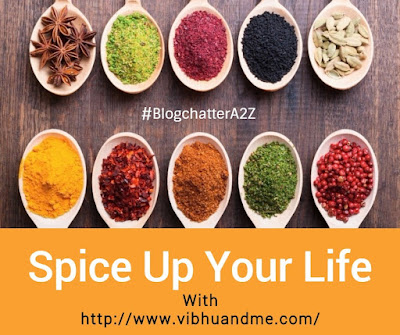It is mango season again. The fruit market is getting decorated with a variety of mangoes here in Delhi. And in the vegetable market, raw mango is in biggest demand. These initial days of summer bring a flood of raw mangoes in my hometown's market. And most of the ladies get busy into making mango pickles. Yes, that finger licking pickle which makes our food tastier. Pickle making is not a process, it is rather a tradition in many of the Indian families. But while mangoes might reign supreme, the truth is there is no Indian fruit, vegetable or berry that you will not find in a pickle.
The most common ingredients of any North Indian pickle are fennel, asafoetida (Heeng), chili and of course the very important Mustard. In every pickle, either mustard powder or mustard oil is used as a base which when used with salt, acts as the preservative. For many of us, mustard is a black round shaped spice that is commonly used in tempering. However, there are many types of mustard seeds available and they have their distinct uses. This post is dedicated to Yellow Mustard.
Y For Yellow Mustard Seeds
Mustard seeds are, I guess, the second most used spice in my kitchen. The first is, of course, cumin seeds that are blindly added in almost every North Indian dish. Mustard seeds are about 3 mm in diameter and may be colored from yellowish to blackish yellow. It is also known as "Sarso" or "Rai" in Hindi. Out of many mustard types, yellow is considered the best as per my mother. Be it for pickles or in curries, adding yellow mustard is assumed first-rate. There is also a difference in the flavor between black and yellow mustard. The black mustard comes with a strong pungent flavor, whereas the yellow mustard comes with a mild flavor. Yellow mustard is open-handedly used in the US as well.
The most common ingredients of any North Indian pickle are fennel, asafoetida (Heeng), chili and of course the very important Mustard. In every pickle, either mustard powder or mustard oil is used as a base which when used with salt, acts as the preservative. For many of us, mustard is a black round shaped spice that is commonly used in tempering. However, there are many types of mustard seeds available and they have their distinct uses. This post is dedicated to Yellow Mustard.
Y For Yellow Mustard Seeds
| Mustard Plants (Credit: Google Image search) |
In my family, ubtan made with yellow mustard is often used for young kids. It is assumed skin hydrating and keep infections at bay. And one more interesting fact that my mother shared. The honey from the beehive which is close to a yellow mustard farm is considered matchless and super beneficial. It is assumed that the bees have collected the nectar from the flowers of yellow mustard plants and the nectar possess many therapeutic properties. The mustard flower is indeed really beautiful and smells just like mustard. Other than its culinary use, people put yellow mustard seeds into the fire to ward off the evil eye.
History of Mustard Seeds
According to reliable sources, Mustard was first cultivated in India around 3,000 B.C.E. The mention of mustard is also found in the holy Quran. And there is a mention of mustard in the Bible as well. In both the sacred books, it is used to exemplifying something that is small and insignificant, which when planted (like faith and truth), grows in strength and power. The Greeks used mustard as both a condiment and a medicine. In the sixth century, B.C.scientist Pythagoras used mustard as a remedy for scorpion stings. A hundred years later, the Greek physician Hippocrates used mustard in medicines and poultices. Mustard plasters were applied to treat toothaches and a number of other disorders. Romans also used mustard. Pliny the Elder made mention of strong flavor of mustard. During the 20th century, the use of mustard as a spice and condiment has grown to the extent that it is by far the largest spice by volume in world trade.
In India, it is present since the time of Gautam Buddha at-least, as there is a famous story of realization from that time. A lady lost her only son and in deep grief, he went to Buddha for getting her son back. Buddha asked the lady to bring a handful of mustard seeds from a house who never lost anyone in the family. She couldn't find any such house and soon realized that death is universal.
Ayurvedic Benefit of Yellow Mustard Seeds
The classical Ayurvedic literature has notable mention of mustard though it is documented there with different names such as, sarsapa, siddharthaka, rajikaa. Eminent Ayurvedic sources like Charaka Saṃhita, Suśruta Saṃhita, and Kaśyapa Saṃhita has its mention. Yellow mustard is named as Pita sarsapa in Charaka Saṃhita and Vagbhaṭa. Mustard has been used as both food and medicine in Ayurveda. Mustard leaf is considered a vegetable, while the seeds are used as a condiment and constitute the source of beneficial mustard oil. Mustard is in use for its healing properties since the time of ancients. It is an antiseptic, antibacterial and antiviral item. It aids in digestion and eases gastric trouble. It is also considered warming and carminative.
For centuries mustard plaster has been used to treat chest congestion and cough. It is also helpful for a headache, joint pains and for a common cold. Mustard seeds are recommended to be used as plaster, powder and as a gargle to cure leucoderma, cracked skin, fever, leprosy, wasting, insanity, epilepsy, swelling, rheumatoid arthritis, neurological disorders, gynecological disorders, breast milk disorders, wounds, acne, eruptions in oral cavity and retention of the placenta.
Dadi Maa Ka Nuskha
Mustard seeds are a natural scrub. Add any essential oil in the yellow mustard powder and use this mix to scrub your face and exfoliate dead skin.
How to buy
Yellow mustard is easily available in stores. Even the powder can be taken for quick use.You can make the yellow mustard sauce using the seeds. The classic sauce has a refreshing piquancy that makes it work perfectly with sandwiches and burgers
Mustard seeds are a natural scrub. Add any essential oil in the yellow mustard powder and use this mix to scrub your face and exfoliate dead skin.
How to buy
Yellow mustard is easily available in stores. Even the powder can be taken for quick use.You can make the yellow mustard sauce using the seeds. The classic sauce has a refreshing piquancy that makes it work perfectly with sandwiches and burgers
(I am taking part in #BlogchatterA2Z and today’s letter is 'Y'.)
You can read my other #BlogchatterA2Z posts here :
You can read my other #BlogchatterA2Z posts here :
- A For Alkanet Root - A Magical Spice
- B For Black Salt - A Digestive Stimulant
- C For Cinnamon - God of Spices
- D for Dried Ginger - A More Beneficial Form of Ginger
- E For Edible Silver and Gold Foils
- F For Fennel Seeds - More Than A Mouth Freshener
- G for Green Cardamom - The Queen of Spices
- H For Holy Basil - The King of Herb
- I For Indian Gooseberry - A Super food
- J For Jaggery - A Medicinal Sugar
- K For Kalpasi - An Unknown Treasure
- L For Long Pepper - An Underrated Spice
- M For Mace - The Cousin of Nutmeg
- N For Nutmeg - The Pricey Spice
- O For Onion Seeds - The Flavor Master
- P For Poppy Seeds - The Nutty Savor
- Q For Quinoa And Quatre-Epices
- R For Red Chili - The Fierce Spice
- S For Star Anise - The Beautiful Spice
- T For Turmeric - The Golden Spice
- U For Urad Dal - A Great Tempering Ingredient
- V For Vinegar - The Sour Agent
- W For White Sesame Seeds - A Nutrient Rich Eat
- X For Xacuti Spice Mix - A Goan Specialty












Comments
Post a Comment